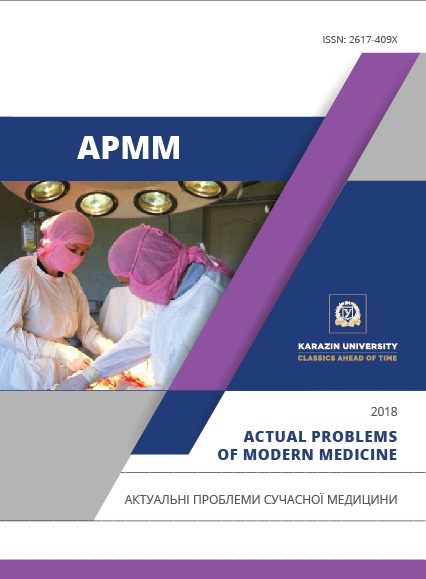PERFUSION INDEX AS AN INDICATOR OF COMPENSATION OF HYPOVOLEMIA AND POSSIBLE COMPLICATIONS IN PATIENTS WITH COMBINED TRAUMA
Abstract
Hemorrhage in multiple trauma causes activation of a number of compensatory mechanisms, one of which is centralization of blood circulation and peripheral tissue hypoperfusion, which is accompanied by decrease in perfusion index (PI). PI is an indicator of volumetric peripheral blood flow and is measured with photoplethysmography method. This study was conducted to assess the relationship between the perfusion index, the degree of hypovolemia and its compensation after treatment with infusion-transfusion therapy in patients with multiple trauma in ICU settings. 32 patients (20 men and 12 women) aged from 32 to 46 years were examined. For the analysis were selected patients with multiple trauma - spleen rupture in combination with damage of one of the large tubular bone (femur, brachial or tibial bone). The obligatory inclusion criterion was the presence of clinical signs of compensated hypovolemic shock (arterial pressure lesser than 90, heart rate more than 100), a quick response to volemic resuscitation, without the use of additional inotropic support. As a result of the study, an increase in the perfusion index was noted already after 6 hours after damage control surgery and traumatology intervention with ongoing infusion-transfusion therapy in ICU, which indicates that perfusion of the peripheral pool of the bloodstream was improved and correlated with an increase in central venous pressure values, central hemodynamic parameters. It is advisable to use PI as one of the indicators of the degree of volemic status compensation in patients with multiple trauma. The growth of PI corresponds to the improvement of hemodynamic parameters. In some cases, the rapid recovery of volemic status after therapy according to continuous arterial pressure measurement, pulseoximetry, CVP, PI exacerbated anemia, caused by infusion associated hemodilution. This should be taken into account, because prolonged anemia can lead to diminished mental status of the patient. Also, an excessive increase in PI may indicate an over-activation of the sympathetic system due to exacerbated pain syndrome, which apparently can serve as an indicator of insufficient analgesia.
Downloads
References
Kursov, S. (2015) Perfusion index in anesthesiology and intensive therapy practice (Literature review) Emergency Medicine. 7. P. 20-25. (in Russian)
Kursov, S. (2015) Emergency assessment of the state of bulk peripheral blood circulation and the state of volume as a result of photoplethysmographic research. Achievements of clinical and experimental medicine. 1. P. 149. (in Ukrainian)
Acar Y.A., L. Yamanel, O. Cinar [et al.] (2015) Perfusion Index from Pulse Oximetry Predicts Mortality and Correlates with illness Severity Scores in Intensive Care Patients. Acta Medica Mediterranea. 31. P.237-242.
Douglas P. Wagner, Elizabeth A. Draper (1984) Acute physiology and chronic health evaluation (APACHE II) and Medicare reimbursement. Health Care Financ Rev. Nov 1984(Suppl). P.91–105.
He Huai-wu, Da-wei Liu Yun Long, Xiao-ting Wang (2013) The Peripheral Perfusion Index and Transcutaneous Oxygen Challenge Test Are Predictive of Mortality in Septic Patients After Resuscitation. Critical Care. 17. R. 116. http://www.ccforum.com/content/17/3/R116
M.E. van Genderen, S.A. Bartels, A. Lima [et al.] (2013) Peripheral Perfusion Index as an Early Predictor for Central Hypovolemia in Awake Healthy Volunteers. Anesthesia & Analgesia. Vol. 116, № 2. P. 351-356.
Vincent J.L., Moreno R., Takala J., Willatts S., Medonca A.D., Bruining H., Rainhart C.K., Suter P.M., Thijs L.G. (1996) The SOFA (Sepsis-related Organ Failure Assessment) score to describe organ dysfunction/failure. Intensive Care Med. 22. P.707-710.




